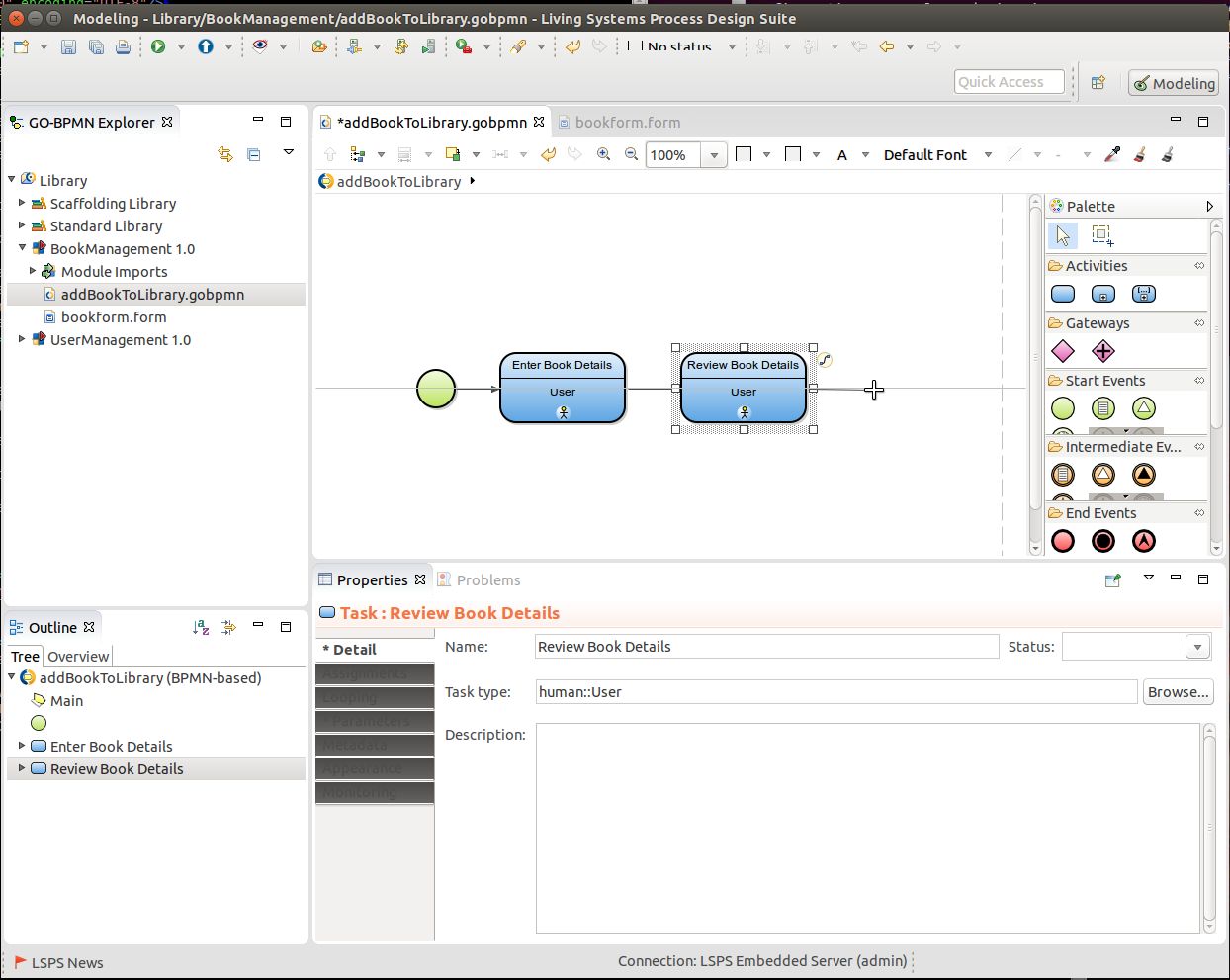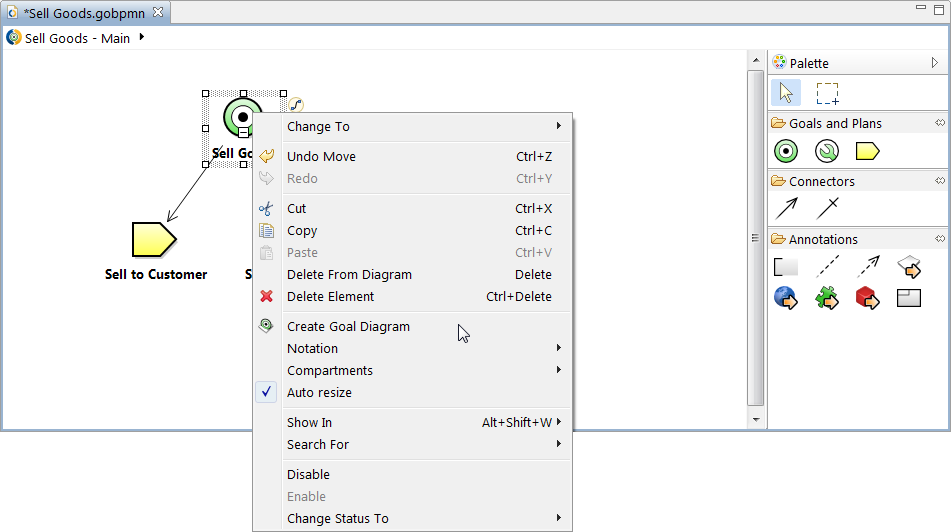
A Process is defined in a process definition file, which can hold one BPMN or GO-BPMN Process. When the process is executed, it is executed directly based on the definition: no compilation or code translation takes place.
For further information on Processes and their elements, refer to GO-BPMN Modeling Language Guide.
To create a Process, do the following:
Executable: when selected the process is instantiated as part of the model instance and can be used as a Sub-Process or as the Activity parameter of the Execute task.
The flag marks a process that serves only for documentation purposes.
Note: Modeler is a diagram editor: you can editing the content of the Process definition via a diagram, hence consider getting familiar with the concept of diagrams and diagram editors.

You can instantiate your process with parameters if it is instantiated with a function call or by a reusable sub-Process, etc. If a process is instantiated automatically by its model it cannot take any input parameter.
To define process parameters, do the following:
In the Outline view, right-click the process and select New > Parameter. Make sure to select the parameter as Required if it cannot be null: if not required and the process is instantiated without the parameter, the parameter value is null.
Alternatively, you can open the process properties in the Properties view and click Add on the Parameters tab.
Example process instantiation
Process variables are accessible from within the process context and are initialized when the process instance is created.
To define local process variables do the following:
After you have created a process, you can model its content: the way you design your process and the element you use are primarily determined by the process type you have chosen, that is, whether your process is BPMN- or GOBPMN-based.
Process content is defined using the Modeler, which is a dedicated diagram editor: when you open a process for editing, the editor opens a diagram. As you insert new element views onto the diagram, the elements are created in the process and displayed in the Outlook view.
To change the task type of an existing Task, right-click the Task in the canvas and click Change Type. In the dialog box with task types select the new Task Type.
Note that any parameter value you have already defined are lost unless the new Task Type defines the same parameter.
To remove the invalid parameters and keep only the parameters that are relevant for the new Task Types, go to Project -> Task Parameter Cleanup: Task type parameter cleanup automatically removes irrelevant parameters and parameter values.
To nest one or multiple Process elements into a Sub-process, select the elements, right-click the selection, and in the context menu, click Extract to Subprocess.
To continue designing a goal sub-tree in a new diagram (that is, to create an implicit hyperlink on a goal):
